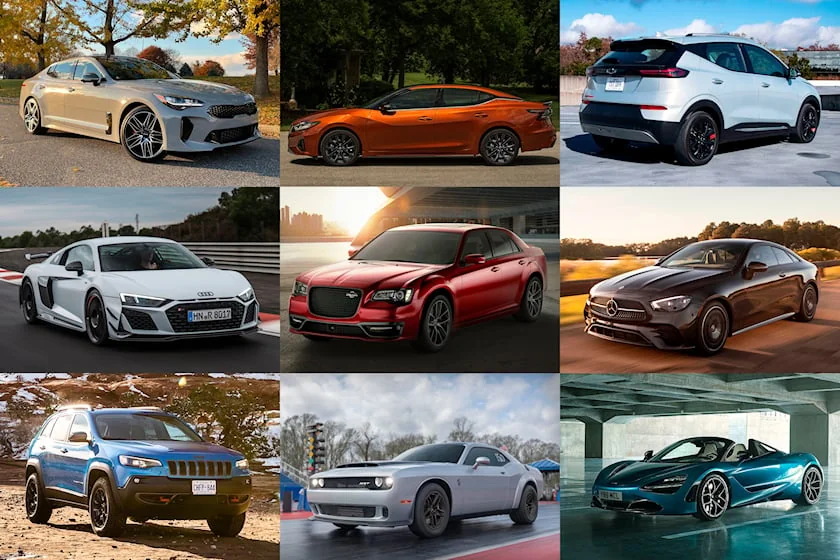The list of Discontinued Cars 2026 is growing fast as automakers realign strategies around EVs, sales trends, and changing market demands. Over 30 cars have already been confirmed or strongly rumored to exit production after the 2025 model year. From luxury coupes and iconic sedans to budget-friendly compacts, this year’s farewell list spans nearly every segment.
BMW plans significant changes, cutting the X4, 8 Series, and M8 Competition. The X4, once a trendy SUV coupe, lost traction after a decade. BMW also decided to end its flagship 8 Series lineup, including the stunning Gran Coupe and performance-packed M8. Even the XM’s base trim won’t return, as BMW now focuses solely on the higher-end XM Label.
Audi joins the trend with several exits. The gas-powered A4 will morph into a new A5, while Audi revives the A4 name for a future EV. The A7 Sportback, a beloved design icon, is also likely to disappear. Audi hasn’t confirmed it yet, but declining sedan sales suggest the end is near.
Cadillac has already stopped producing the XT4 and will phase out the larger XT6 next. Sales didn’t meet expectations, and General Motors wants to free up space for the next-gen Chevrolet Bolt. Meanwhile, the XT5 is also rumored to be ending soon, although all three models will continue in China.
Nissan is clearing out older models too. The discontinued cars for 2026 may include the Altima and the Versa. Altima’s legacy stretches back to 1993, but it’s no longer a key player in the midsize sedan market. The Versa, still America’s cheapest car, may not survive despite a sales bump in 2024. Nissan hasn’t confirmed it, but reports suggest a phase-out.
Lexus is trimming its lineup by dropping the LC Hybrid and the RC coupe. The LC500h will disappear while the V-8 LC500 gets a 2026 refresh. The RC and its high-performance sibling, the RC F, will also vanish. These coupes never gained significant market share, especially in recent years.
Porsche prepares for its electric era by ending the 718 Boxster and 718 Cayman. Both will return in EV form, but the current gas-powered versions exit after 2025. Delays in development could affect the timeline, but the ICE versions won’t make it into 2026. Porsche is also reevaluating the Macan’s future. The gas-powered Macan may continue if EV demand stays soft, despite earlier plans to retire it.
Ford’s Escape also lands on the Discontinued Cars 2026 radar. Though it sold over 140,000 units in 2024, reports claim Ford will limit its availability to certain states. That makes it a regional discontinuation, rather than a total end—still notable for one of Ford’s top sellers.
Chevrolet plans to retire the gas-powered Blazer in favor of the Blazer EV. With a 20% sales drop in 2024 and an EV model already on sale, the decision seems inevitable. GM hasn’t confirmed the exact timeline, but industry watchers expect the gas version to vanish soon.
Infiniti will say goodbye to both the QX50 and QX55. Even though the QX50 was the brand’s best seller, it failed to compete against rivals. The coupe-like QX55 couldn’t boost interest. Infiniti will focus on newer models like the QX60, aiming to reset its luxury crossover strategy.
Mercedes-Benz may remove the GLC Coupe and GLE Coupe from its U.S. lineup. The company plans to simplify its model offerings, and these coupe-style SUVs are top candidates for removal. GLC sales rose last year, but Mercedes doesn’t report separate numbers for the coupe versions. That makes it harder to defend keeping both around.
Volvo plans to retire the S60 and S90 sedans, along with the V60 Polestar Engineered wagon. The S60 once rivaled sport sedans from Germany, but never hit high sales. The S90 exits the U.S. market but will continue in China. As for the V60 Polestar, Volvo is dropping it due to slow demand, even though it offered powerful performance and a unique hybrid layout.
Subaru is finally ending the Legacy after more than 30 years. The sedan played a major role in Subaru’s U.S. expansion, bringing all-wheel-drive sedans to the masses. With fewer than 20,000 units sold in 2024, the Legacy bows out quietly.
The Discontinued Cars 2026 lineup reflects a broader shift in the auto industry. Manufacturers are dropping underperforming models, aging designs, and internal combustion vehicles that don’t align with future goals. In many cases, automakers plan electric successors. In others, they’re abandoning slow sellers altogether.
This annual purge shows no signs of slowing down. As more updates roll in, more models could join this list. What’s clear is that the car landscape in 2026 will look quite different—leaner, more electrified, and shaped by bold strategy decisions.
